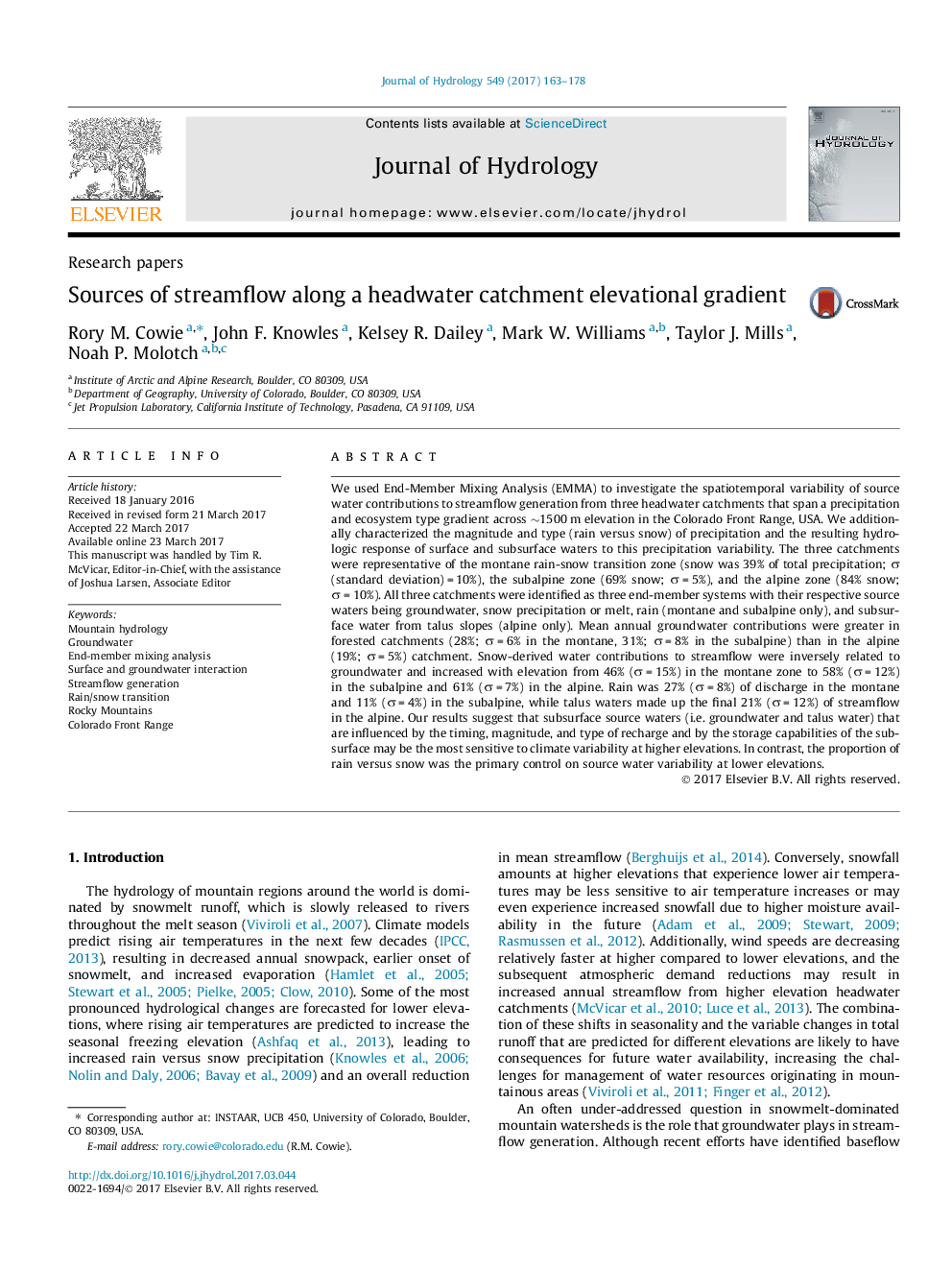| کد مقاله | کد نشریه | سال انتشار | مقاله انگلیسی | نسخه تمام متن |
|---|---|---|---|---|
| 5770974 | 1629905 | 2017 | 16 صفحه PDF | دانلود رایگان |

- We evaluated the source waters of three headwater streams at different elevations.
- End Member Mixing Analysis showed that all catchments were three end-member systems.
- Groundwater and snow melt water were important source waters in all three catchments.
- Talus water was a uniquely important contributor to the alpine catchment hydrology.
- Cryospheric loss at high-elevations may disproportionately affect water availability.
We used End-Member Mixing Analysis (EMMA) to investigate the spatiotemporal variability of source water contributions to streamflow generation from three headwater catchments that span a precipitation and ecosystem type gradient across â¼1500Â m elevation in the Colorado Front Range, USA. We additionally characterized the magnitude and type (rain versus snow) of precipitation and the resulting hydrologic response of surface and subsurface waters to this precipitation variability. The three catchments were representative of the montane rain-snow transition zone (snow was 39% of total precipitation; Ï (standard deviation)Â =Â 10%), the subalpine zone (69% snow; ÏÂ =Â 5%), and the alpine zone (84% snow; ÏÂ =Â 10%). All three catchments were identified as three end-member systems with their respective source waters being groundwater, snow precipitation or melt, rain (montane and subalpine only), and subsurface water from talus slopes (alpine only). Mean annual groundwater contributions were greater in forested catchments (28%; ÏÂ =Â 6% in the montane, 31%; ÏÂ =Â 8% in the subalpine) than in the alpine (19%; ÏÂ =Â 5%) catchment. Snow-derived water contributions to streamflow were inversely related to groundwater and increased with elevation from 46% (ÏÂ =Â 15%) in the montane zone to 58% (ÏÂ =Â 12%) in the subalpine and 61% (ÏÂ =Â 7%) in the alpine. Rain was 27% (ÏÂ =Â 8%) of discharge in the montane and 11% (ÏÂ =Â 4%) in the subalpine, while talus waters made up the final 21% (ÏÂ =Â 12%) of streamflow in the alpine. Our results suggest that subsurface source waters (i.e. groundwater and talus water) that are influenced by the timing, magnitude, and type of recharge and by the storage capabilities of the subsurface may be the most sensitive to climate variability at higher elevations. In contrast, the proportion of rain versus snow was the primary control on source water variability at lower elevations.
Journal: Journal of Hydrology - Volume 549, June 2017, Pages 163-178